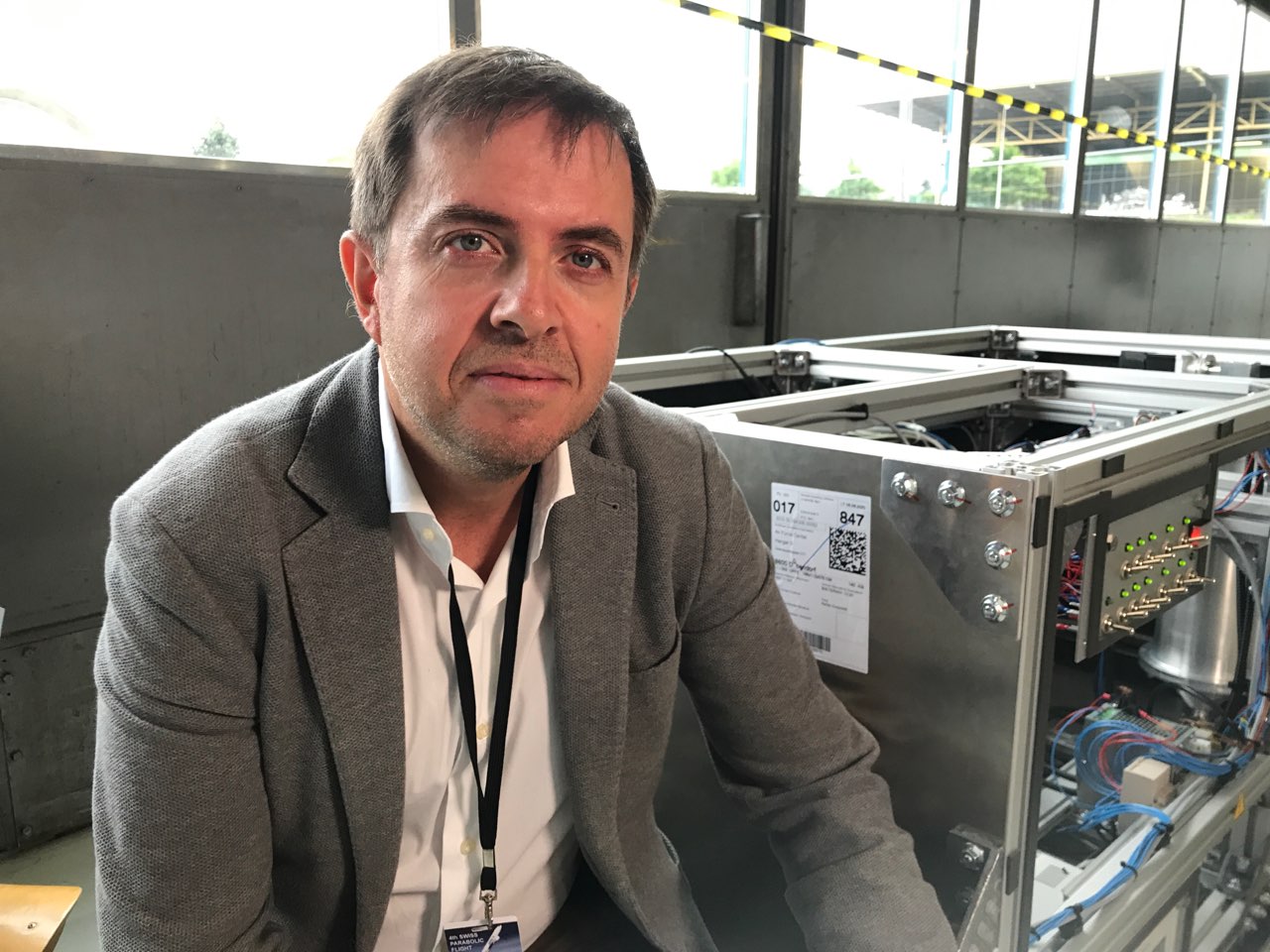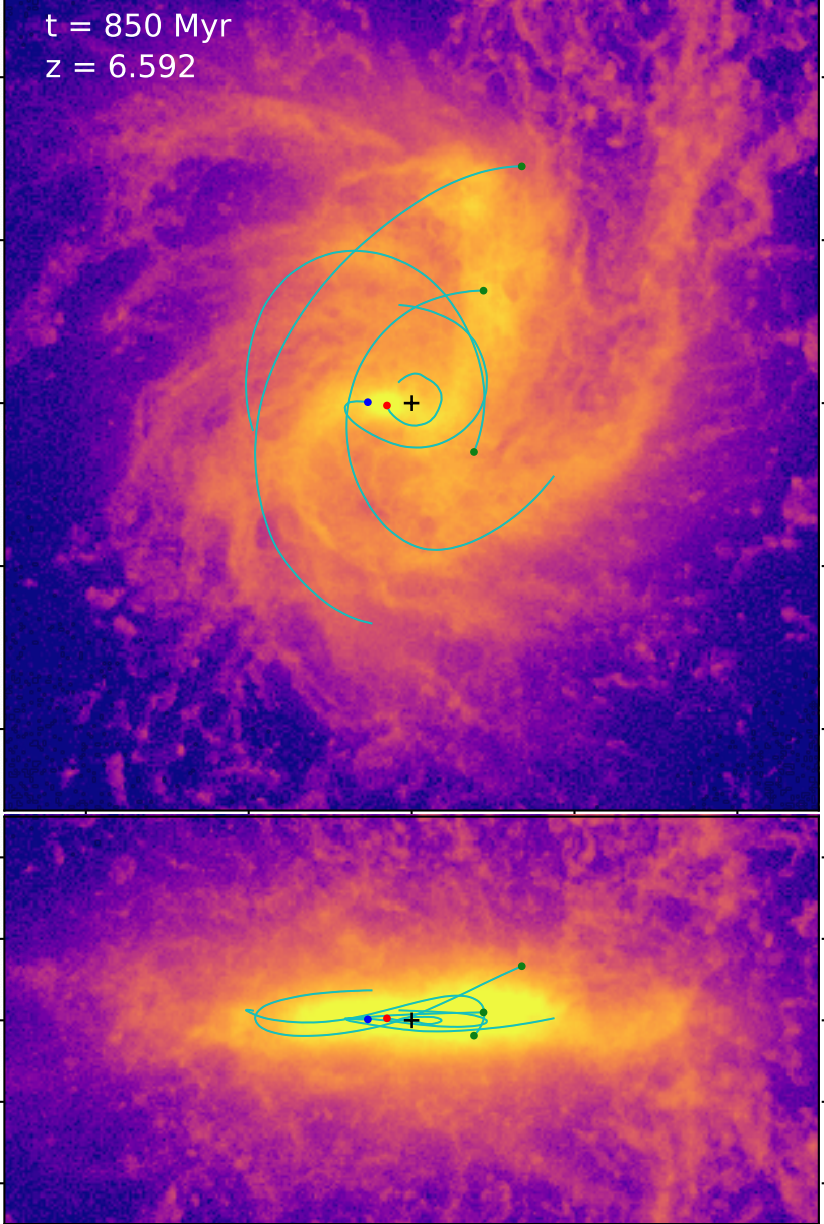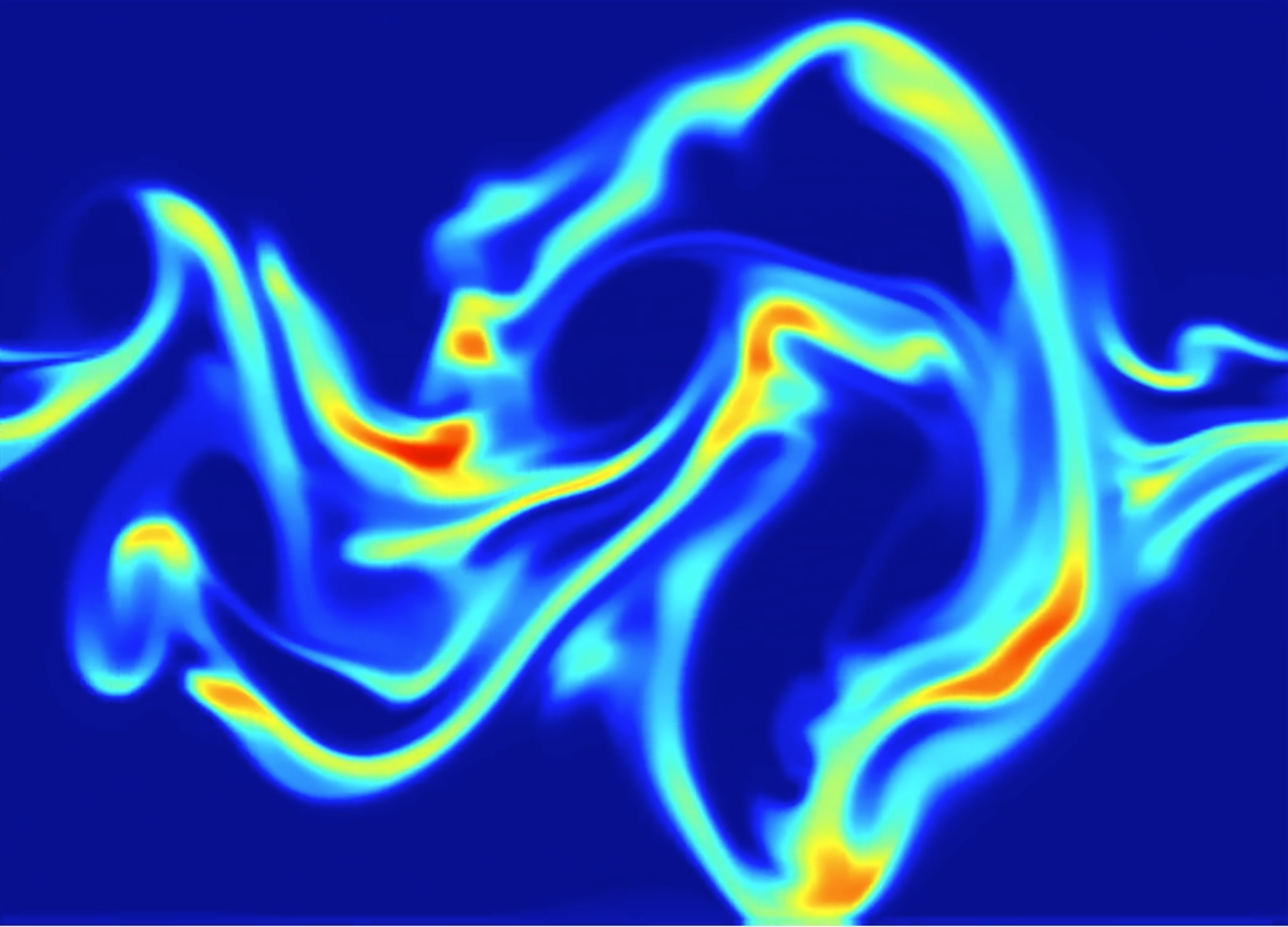Meet a Space Scientist: Prof. Dr. Lucio Mayer
This month we have interviewed Lucio Mayer, here on the left, professor at the Institute for Computational Science and Center for Theoretical Astrophysics and Cosmology at the University of Zurich. Want to know more? Read the full interview!

What is the main area of your research?
Theory and computation in Astrophysics and Cosmology, with focus on how structures of various kinds, and at various scales, can form: from planets to the largest black holes in the Universe, from star clusters in the distant Universe to galaxies as a whole. Often the physical processes behind the origin of these structures are similar, but take place in different regimes. Most of the time in astrophysics these are separate sub-fields, but the philosophy of the research is exactly the opposite, as it stands on the notion that an "holistic" approach allows to understand new aspects and connections between different problems that are often similar. Understanding those connections often leads to innovative solutions to long-standing problems. The same is true for the development of computational methods to solve such problems, which also is an important part of what we do.

What brought you to the Space sector?
Exactly this holistic approach that I just mentioned. The idea that some of the most complex processes in the Universe require a multi-faceted approach to be understood. Now, for example, we will attend the 4th Swiss Parabolic Flight Campaign with an experiment on the very start of the planet formation process. Putting together the "building blocks", the first boulders that grew into planetary cores, requires understanding the complex behaviour of dust particles in microgravity conditions. There are too many degrees of freedom to rely just on simulations as we have done so far, we realized we need the help of experiments to constrain the possibilities and tell us which outcomes would happen in reality and which not. The parabolic flight campaign, in which we can carry out microgravity experiments on dust particles, is the ideal opportunity for us to make a major step forward in the field of planet formation by combining uniquely theory/simulations and experiment.
On another side of things, our group is very close to major ESA-led endeavours in the Space Sector. We are indeed fully embedded in the scientific Consortium behind the LISA space mission. Even more, our group is in a leadership position as I am one of the Chairs of the Astrophysics Working Group, coordinating more than 400 scientists around the world who look forward to gravitational wave detection from space as a new way to understand black holes as well as the nature of spacetime and the Universe as whole.
What do you like most about your job?
That we deal with fundamental questions on the Universe, sometimes relying on abstract equations and the ability of supercomputers to solve them, but at the same time we can always convince ourselves that what we do is grounded in reality, and not just an abstraction, when we look at some beautiful image of an astronomical object from, say, the Hubble Space Telescope. This combination of complete mathematical abstraction and sheer visual reality is something that, I believe, only very few fields of science possess. We are fortunate to be in one of those. This combination is also the reason why every day our research can lead to a new path -- the Universe is very big after all!
...and what do you like most about Space?
Two aspects: one is the enormous innovation that Space offers to research, and in astrophysics this is a need and not an option. The other one is the pure aspect of exploration itself, which embodies the best of what humans have been able to do since the beginning of civilization and, we would hope, will continue to do in the future.
What would be in your opinion the greatest achievement in the Space Sector?
Achieving a new transformative synergy between space agencies, along with national and transnational space-related interests and policies, and private subjects offering new technology to re-boost the section to a fast-paced level as it was in the 60s and 70s. I am happy to mention this just a few days after the historical launch of Space-X with a manned crew. It might be the beginning of this new synergy, and a new era for space exploration. The human exploration of other Solar System planets, beginning with Mars, will need that. Sometimes scientists are not so in favour of pushing space exploration or missions by humans, due to the fear that it might come at the detriment of science itself. I think we need both, and history of the past thousands of years tells us that direct exploration has been a major driver of progress. It is, I think, unavoidable; we started on this planet but it is short-sighted to think we will remained confined here.
You are part of the UZH Space Hub: What do you think this will mean for you and your research?
The Space Hub gives us the tremendous opportunity to foster new interdisciplinary work, both by starting new collaborations with the other teams involved, which span almost any scientific field we can think of, and to bring new interdisciplinary project ideas of ours to reality. The TempusVola project, which will be carried out during the next flight campaign, is primarily funded by the NCCR, but can only become reality
thanks to the existence of the Space Hub. This project is becoming the most innovative aspect of the whole NCCR PlanetS, and NCCR that targets the area for which the Swiss colleagues Michel Mayor and Didier Queloz just won the Nobel Prize in Physics (Michel is one of our mentors in the NCCR). Moreover, PlanetS is directly involved in funding the CHEOPS mission, the first Swiss-led space-based planet detection mission, hence it is strongly embedded in space activities already in collaboration with ESA. Yet TempusVola is a unique product of the collaboration with the SpaceHub.
You're going to attend the next Parabolic Flight campaign leaving from Dübendorf. What kind of experiment are you going to do? What is the goal and what do you expect?
The experiments deal with understanding the bahaviour of small dust particles embedded in a dilute gas, in microgravity conditions. This mimics the situation in protoplanetary disks before the planet formation process began. We want to see if and how dust particles can quickly aggregate into clusters, which would eventually lead to forming the solid building blocks of planets. One idea that has been around for a while,
and which we have investigated often with our simulations, is that, when the dilute gas embedding the dust becomes turbulent, the dust particles will be trapped in the turbulent eddies, collide and stick, and thus grow into clusters. But this happens in the simulations under simplifying conditions, for example assuming that dust particles are spherical and smooth. One important question is; what will happen with real dust particles, which are porous and/or fluffy, and have irregular shapes? This is the sort of thing that experiments
will teach us, then based on the results we will go back and improve the simulations. This type of approach with multiple feedback loops between simulations and experiments is new, only a couple of other groups work on similar projects, but so far not with experiments carried out from space.

UZH Space Hub